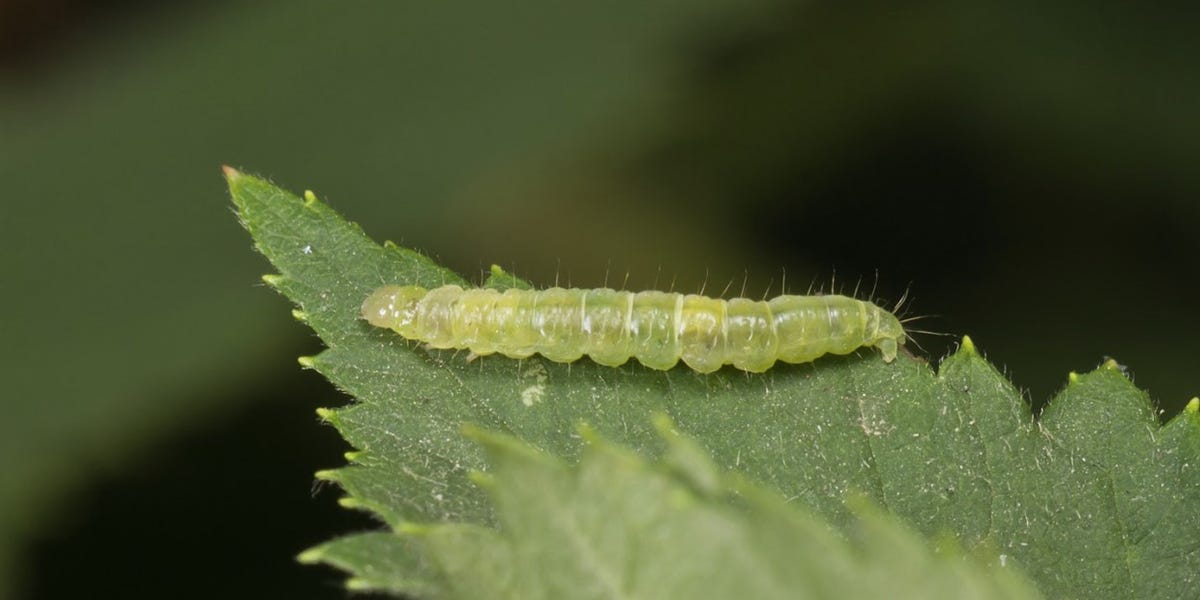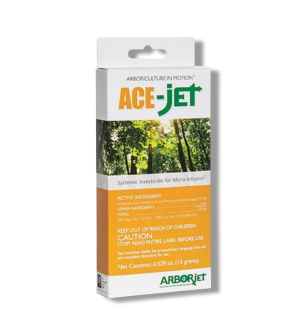Leafroller Control
Most Effective Products
Leafroller Control: How to Get Rid of Leafrollers
This page is a general DIY guide for leafroller control. Using the products and methods suggested you will get control of leafroller. Follow this DIY guide and use the recommended products and steps to completely control leafroller infestations.
Leafrollers are the caterpillar stages of various species of moths belonging to the family Tortricidae. This common pest feeds on the young fruit, nuts, and leaves of trees, vegetables, and other garden or orchard plants in northeastern to southern lawns depending on the species. In southern regions the most encountered species is the oak leaf rollers, bean leaf roller, or omnivorous leafrollers whereas in northern lawns it is the obliquebanded leafroller. A common species of leafroller found throughout the United States is the fruit tree leafroller moth.
As the name suggests, the leafroller protects itself during the pupate stage by rolling leaves from a hanging leaf around it then emerging as a moth in the spring. While this action may look harmless it is a alarm for homeowners to begin insecticide applications. With leaves rolled up this leads to loss of nutrients, discoloration, wilting, then death of desirable foliage.
There are natural predators such as birds, spiders, or ants to minimize leaf roller populations, however, natural predators rarely inhibit one terrain long enough to fully control the pest. For this reason, refer to the following article and following the recommended steps and products for full control of leafroller populations.
Identification

Before you proceed with a treatment program, you will need to confirm if the pest infestation is a leafroller. Misidentification can lead you to using the wrong insecticide products, which can be a waste of your time and finances. Since there are numerous leafroller species the following characteristics are general traits that most pests possess:
- Most leafroller larvae will range between dark to light green, cream, brown, or yellow in coloration.
- Bodies are slender cylindrical shaped with black or brown head capsules.
- Have pairs of leglike appendages along abdomen that help the leafroller to move backwards and vigorously to escape danger.
- In the larvae stage they reach a length of 2/3 to 3/4 inches.
Use the image and description above to determine whether the pest infesting your property is a species of leafrollers. If unsure, then you may contact us with a photo of the pest or visit one of our store locations with a sample of the pest in a sealed plastic bag.
Inspection

Once you have confirmed the infestation is leafrollers, then you can proceed with inspection. During this phase, you will determine the areas of infestation and observe the conditions allowing the leafroller to survive. By learning this information you will know where to apply your insecticide products lessening the amount of product used and time.
Where to Inspect
Leafrollers in the moth stage will be difficult to identify as most species are nocturnal. Look around leaves, plant buds, nuts, and fruits of trees, vegetables, shrubs for larvae activity. Typically, the most common areas to find leafrollers are in gardens, orchards, and trees across your property.
What to Look For
Feeding activity of leafroller larvae gives a ragged or curled appearance as this pest curls leaf's into a roll and sometimes wraps these leaves with silk. These rolled up leaves can be found at the highest point of the branch stem to evade predators. Each stage of leafrollers provide small irregular holes across the foliage leaves and fruit.&
In the spring months, you will either see the larvae or eggs during the day. Eggs of leafrollers are laid in large overlapping clusters on leaves or branches with a dark gray or brown colored liquid coating across the eggs that fades over time to a bleach white coloration.
Treatment
Before handling or applying any insecticide products, you will need to wear the appropriate personal protective equipment (PPE).
Due to the variations of leafroller species activities, it is recommended to apply a long-lasting residual insecticide in the first half of spring and late summer. We recommend using Supreme IT, which is a liquid insecticide that eliminates over 70 types of pests such as leafrollers. Once applied this product will last up to 90 days to protect your lawn, foliage plants, non-bearing fruit and nut trees, shrubs, and ornamental trees from leafrollers.
Non-bearing fruit and nut trees are those that will not produce a harvestable crop during the season of application.
Step 1: Pruning

With a pair of hedge trimmers or hand pruners remove decaying tree limbs, fruits, nuts, plant buds, and leaves before the plant reaches dormancy.
You may also directly remove rolled leaves from the plant stems with your selected tool.
Step 2: Apply Supreme IT

Determine how much Supreme IT to use by measure the square footage of the treatment area. To do this, measure the length and width of the treatment site in feet then multiply (length X width = square footage). To control leafrollers, apply 0.25 to 0.5 oz. of Supreme IT per gallon of water per 1,000 sq. ft.
Perform a spot treatment with a handheld pump sprayer. To prepare your spray solution pour half the amount of water into the spray tank, then add the measured amount of Supreme IT, and fill the rest of the way with the remaining half of water. Close the tank lid and shake until solution is evenly-mixed. Spray the top and bottom of plant leaves until wet, but not to the point run-off.
Wait until 24 hours have passed or until sprays have dried before allowing children, pets, and people to enter treated areas. Reapply this product when 90 days have passed from first application.
Prevention

Once leafrollers have been eliminated from the treated areas, ensure these pests do not return. Here are some preventative measures we recommend to keep leafrollers away from your property.
- Prune decaying leaves, fruits, and branches or rolled up leaves hanging from stems as leafrollers feed and grow from the inside of rolled up leaves.
- Rake fallen leaves and other plant debris to eliminate other possible food sources and habitats for leafrollers.
- Mow your lawn when it has reached a height of 3 inches to maintain its health and remove other possible food sources.
- Water your lawn and ornamental foliage with an inch of irrigation once a week to push off leafroller eggs and maintain plant health.
- Continually apply Supreme IT every 90 days to eliminate and prevent leafroller activity.
Key Takeaways
What are Leafrollers?
- Leafrollers are caterpillars of various moth species that roll themselves up in plant leaves at the top of branches.
How to Get Rid of Leafrollers
- We recommend performing spot applications with Supreme IT and regular pruning to eliminate leafroller larvae and overwintering activities.
Preventing Leafroller Reinfestation
- To prevent leafroller infestations, apply a long-lasting residual insecticide like Supreme IT every 90 days and maintain regular lawn maintenance such as raking, mowing, and pruning.














































































































































































































































































































































































































































































































































